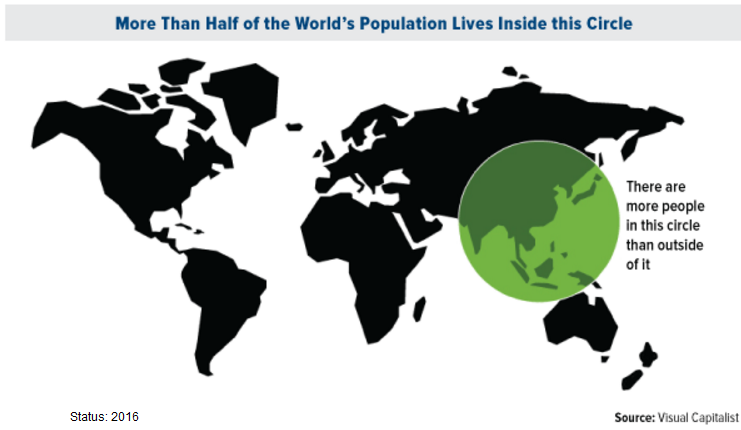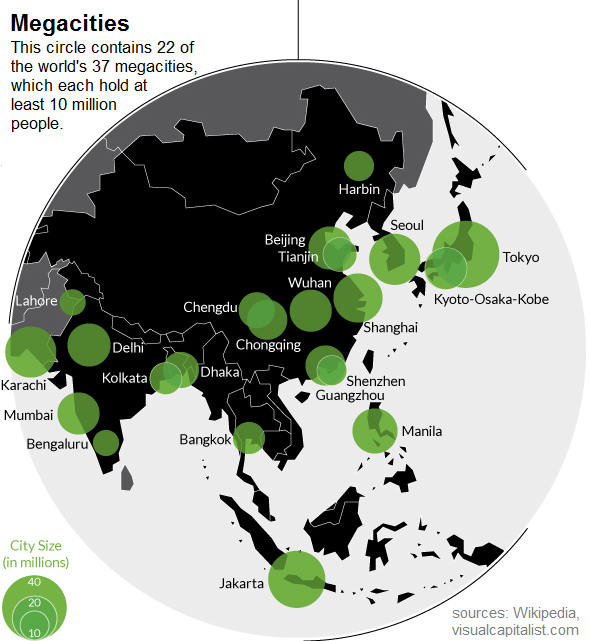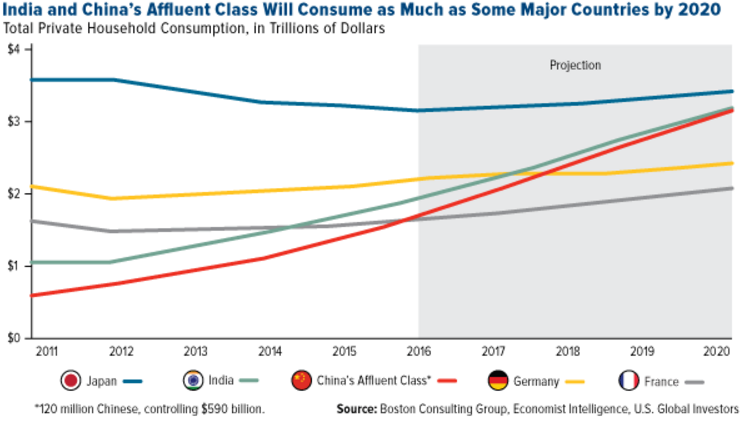Related Categories
Related Articles
Articles
The Majority of the World’s Population Lives in This Circle
China and India, or "Chindia" - is home to about 40 percent of the world's population. Furthermore there are now at least 3.8 billion people living inside the highlighted circle (that circle holds 22 of the world's 37 megacities):

The following image then, courtesy of Visual Capitalist, shows emphatically just how enormous this region's population is. More people live inside the green circle - which covers not just India and China but also Japan and some South China Sea countries - than outside it. The two Asian countries together accounted for more than half of total global gold jewelry demand in 2015. The U.S., by comparison, represented about 5 percent of demand. All of Europe, even less.

There are now at least 3.8 billion people living inside the highlighted circle, and that's not even including the tally from countries that are partially in the circle like Pakistan or Russia. The circle holds 22 of the world's 37 megacities – massive cities that hold at least 10 million inhabitants. It also includes the five most populous cities on the planet: Tokyo, Jakarta, Seoul, Karachi, and Shanghai, which alone combine to hold 144.5 million people.
This geographical region also holds many of the emerging markets of the future, countries that the World Economic Forum expects will lead global growth in years to come. Vietnam, Myanmar, Philippines, Indonesia, and Bangladesh are in the area highlighted, and Pakistan is partially there as well. Fortunately, income growth in Chindia is booming with the rise of the middle class.
Rising Incomes = Golden Opportunity
And just how much income growth are we talking about? According to Boston Consulting Group (BCG) data, consumer spending in both China and India will soon overtake spending in Germany and France, and is on a trajectory to match Japan's level of consumption.

By 2020, the number of "affluent" households in China - those with annual incomes of at least USD 20,000 - will grow to 280 million, equal to 30 percent of the country's urban population. That's quite a leap up from today's 120 million households labeled as "affluent."
As for India, the number of middle class consumers is expected to triple between now and 2025, eventually reaching 89 million people, according to McKinsey & Company. What is even more incredible is that by 2030, the economic output of India’s top five cities is expected to reach the size of five middle-income countries today, according to McKinsey. Mumbai's massive USD 245 billion economy, for example, could soon exceed the entire country of Malaysia. Likewise, India's capital city of New Delhi could one day be bigger than the Philippines.



